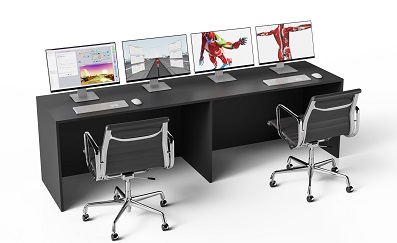Human Body Model vs. other models for paediatric Cerebral Palsy gait training
Motek
A recent study published on sciencedirect.com compared the Human Body Model software versus conventional gait models for kinematic gait analysis in children with cerebral palsy.
With the rise of biofeedback in gait training in cerebral palsy there is a need for real-time measurements of gait kinematics. The Human Body Model (HBM) is a recently developed model, optimised for the real-time computing of kinematics. The study evaluated differences between HBM and two commonly used models for clinical gait analysis: the Newington Model, also known as Plug-in-Gait (PiG), and the calibrated anatomical system technique (CAST). Twenty-five children with cerebral palsy participated.
All three marker models show similar outcomes for sagittal plane joint kinematics. However the three marker models differ largely in frontal and transverse plane joint kinematics. The study found that the HBM is accurate enough to be used in gait analysis and biofeedback training.

